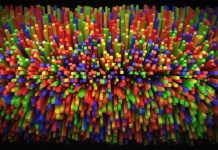Digital Twins, a cutting-edge technology at the convergence of the physical and digital worlds, have emerged as a game-changer across diverse industries. This innovative concept involves creating a digital replica or representation of a physical object, system, or process. Essentially, a Digital Twin is a virtual counterpart that mirrors the characteristics, behavior, and dynamics of its real-world counterpart. This twin is continuously updated with real-time data, allowing for analysis, monitoring, and simulation of the physical entity it represents. The potential of Digital Twins is vast, offering transformative solutions that enhance understanding, decision-making, and performance across various domains.
Digital Twins, at their core, are built on the foundation of data and advanced technologies. Through sensors, Internet of Things (IoT) devices, and other data sources, real-time data is collected from the physical object or system. This data is then fed into the Digital Twin, enabling a dynamic and up-to-date representation. Artificial Intelligence (AI) and Machine Learning (ML) play a significant role in processing this data, optimizing performance, predicting behaviors, and identifying patterns within the Digital Twin. By integrating these technologies, Digital Twins become powerful tools for analysis, providing invaluable insights and foresight into the behavior and performance of the physical entity.
One of the prominent applications of Digital Twins is in the realm of manufacturing and product development. Manufacturers can create a Digital Twin of a product, allowing them to simulate and analyze its behavior in a virtual environment before it is physically produced. This simulation helps in identifying design flaws, optimizing performance, and streamlining the production process, ultimately reducing costs and time to market. Moreover, Digital Twins can be utilized throughout the product lifecycle, aiding in predictive maintenance, performance optimization, and even in the development of new product iterations based on real-time usage data.
In the context of smart cities, Digital Twins hold immense potential in urban planning and management. Creating a Digital Twin of a city involves replicating its infrastructure, utilities, traffic patterns, and more. By doing so, urban planners and policymakers can simulate different scenarios and assess the impact of various changes or developments on the city. For instance, they can analyze the effects of introducing a new transportation system, optimizing energy consumption, or planning for population growth. Digital Twins enable data-driven decision-making, leading to more sustainable, efficient, and resilient cities.
Digital Twins are a transformative concept that melds the physical and digital worlds. They offer a powerful means to replicate, analyze, and optimize real-world objects, systems, or processes. From manufacturing to urban planning, Digital Twins hold the promise of streamlining operations, enhancing efficiency, and enabling data-driven decision-making. As technology continues to evolve, so will the applications and potential of Digital Twins, revolutionizing the way we interact with and understand the physical world.
Expanding on the potential of Digital Twins, the healthcare sector stands to benefit immensely from this technology. Creating Digital Twins of individual patients, known as patient avatars, offers a unique opportunity for personalized medicine. By integrating data from a patient’s medical history, genetic information, real-time health data from wearables, and diagnostic records, a comprehensive digital model of the patient can be generated. This Digital Twin allows healthcare professionals to simulate different treatment approaches, predict the outcomes of various interventions, and tailor treatments to the individual’s specific needs. Moreover, it facilitates medical training and education by providing a realistic and interactive platform for medical students and professionals to enhance their skills and knowledge.
In the realm of architecture, engineering, and construction (AEC), Digital Twins revolutionize the design, construction, and maintenance of buildings and infrastructure. Architects and engineers can create highly accurate Digital Twins of structures, enabling them to visualize and optimize designs, detect potential issues, and assess structural integrity. During the construction phase, project managers can monitor progress in real-time, compare it against the original design, and adjust schedules or resources accordingly. Once the structure is in use, facility managers can utilize the Digital Twin to manage maintenance schedules, energy efficiency, and overall building performance.
Moreover, Digital Twins play a vital role in environmental sustainability. For instance, in the energy sector, creating a Digital Twin of a power plant allows for real-time monitoring of operations, optimizing energy production, and minimizing resource wastage. Similarly, in agriculture, Digital Twins help in precision farming by providing insights into soil health, crop growth, and optimal irrigation strategies. By making informed decisions based on the Digital Twin’s analysis, farmers can increase crop yields, reduce resource usage, and minimize environmental impact.
However, as Digital Twins become more prevalent, certain challenges need to be addressed. Privacy and security concerns regarding the vast amount of data required to create and update Digital Twins are paramount. Safeguarding sensitive data and ensuring compliance with data privacy regulations is a critical aspect of Digital Twin deployment. Additionally, interoperability and standardization of Digital Twins across different platforms and systems are essential to enable seamless collaboration and data sharing.
Digital Twins are a transformative technology that holds tremendous potential across a multitude of sectors. From healthcare to urban planning, manufacturing, and beyond, the applications are far-reaching and revolutionary. The ability to create a digital replica of physical entities and systems, continuously updated with real-time data, offers unparalleled insights and opportunities for optimization. However, it is crucial to address challenges related to data privacy, interoperability, and security to fully unlock the potential of Digital Twins and usher in a future where the virtual and physical worlds seamlessly interact and enhance our lives.
In conclusion, Digital Twins stand at the forefront of technological innovation, embodying the fusion of the physical and digital realms. These dynamic virtual replicas, fueled by cutting-edge technologies like AI and machine learning, are reshaping industries and processes across the spectrum. From healthcare to manufacturing, urban planning, and environmental sustainability, the impact and potential applications of Digital Twins are vast and transformative. However, it is imperative to navigate challenges related to data privacy, interoperability, and security. By addressing these challenges and fostering responsible deployment, Digital Twins can lead us into a future where data-driven decision-making and optimized systems drive efficiency, sustainability, and progress. The journey of Digital Twins is not just a technological advancement but a paradigm shift that promises to redefine how we perceive, interact with, and optimize the physical world.






















